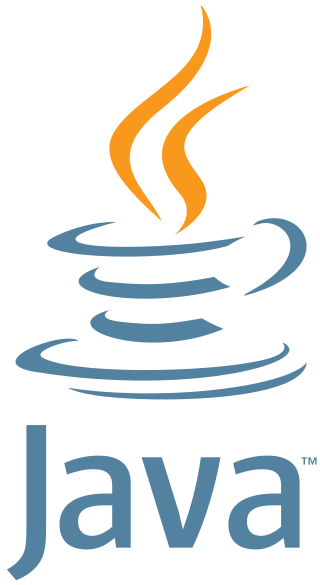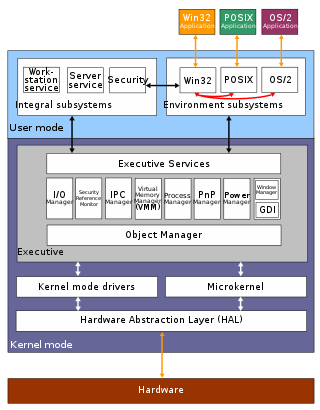
Java is a high-level, class-based, object-oriented programming language that is designed to have as few implementation dependencies as possible. It is a general-purpose programming language intended to let programmers write once, run anywhere (WORA), meaning that compiled Java code can run on all platforms that support Java without the need to recompile. Java applications are typically compiled to bytecode that can run on any Java virtual machine (JVM) regardless of the underlying computer architecture. The syntax of Java is similar to C and C++, but has fewer low-level facilities than either of them. The Java runtime provides dynamic capabilities that are typically not available in traditional compiled languages.

Optical character recognition or optical character reader (OCR) is the electronic or mechanical conversion of images of typed, handwritten or printed text into machine-encoded text, whether from a scanned document, a photo of a document, a scene photo or from subtitle text superimposed on an image.
In computing, cross-platform software is computer software that is designed to work in several computing platforms. Some cross-platform software requires a separate build for each platform, but some can be directly run on any platform without special preparation, being written in an interpreted language or compiled to portable bytecode for which the interpreters or run-time packages are common or standard components of all supported platforms.

The Windows API, informally WinAPI, is the foundational application programming interface (API) that allows a computer program to access the features of the Microsoft Windows operating system in which the program is running.
A CAPTCHA is a type of challenge–response test used in computing to determine whether the user is human in order to deter bot attacks and spam.

Avinash C. Kak is a professor of Electrical and Computer Engineering at Purdue University who has conducted pioneering research in several areas of information processing. His most noteworthy contributions deal with algorithms, languages, and systems related to networks, robotics, and computer vision. Born in Srinagar, Kashmir, he did his Bachelors in BE at University of Madras and Phd in Indian Institute of Technology Delhi. He joined the faculty of Purdue University in 1971.
SuperWaba is a discontinued Java-like virtual machine (VM) that targets portable devices. Software developers use application programming interfaces (APIs), accessed through associated libraries and small tools, to create applications that can run within the VM on supported platforms.
DocuShare is a content management system developed by Xerox Corporation. DocuShare makes use of open standards and allows for managing content, integrating it with other business systems, and developing customized and packaged software applications.
The Speech Application Programming Interface or SAPI is an API developed by Microsoft to allow the use of speech recognition and speech synthesis within Windows applications. To date, a number of versions of the API have been released, which have shipped either as part of a Speech SDK or as part of the Windows OS itself. Applications that use SAPI include Microsoft Office, Microsoft Agent and Microsoft Speech Server.
In Microsoft Windows applications programming, OLE Automation is an inter-process communication mechanism created by Microsoft. It is based on a subset of Component Object Model (COM) that was intended for use by scripting languages – originally Visual Basic – but now is used by several languages on Windows. All automation objects are required to implement the IDispatch interface. It provides an infrastructure whereby applications called automation controllers can access and manipulate shared automation objects that are exported by other applications. It supersedes Dynamic Data Exchange (DDE), an older mechanism for applications to control one another. As with DDE, in OLE Automation the automation controller is the "client" and the application exporting the automation objects is the "server".
ABBYY FineReader PDF is an optical character recognition (OCR) application developed by ABBYY. First released in 1993, the program runs on Microsoft Windows and Apple macOS. Since v15, the Windows version can also edit PDF files.

reCAPTCHA Inc. is a CAPTCHA system owned by Google. It enables web hosts to distinguish between human and automated access to websites. The original version asked users to decipher hard-to-read text or match images. Version 2 also asked users to decipher text or match images if the analysis of cookies and canvas rendering suggested the page was being downloaded automatically. Since version 3, reCAPTCHA will never interrupt users and is intended to run automatically when users load pages or click buttons.

OCRopus is a free document analysis and optical character recognition (OCR) system released under the Apache License v2.0 with a very modular design using command-line interfaces.
This comparison of optical character recognition software includes:
NuCaptcha is an early fraud detection service which utilises behavior analytics to provision threat appropriate, animated video CAPTCHAs. NuCaptcha is developed and operated by Canada-based firm NuData Security.
XRumer is a piece of software made for spamming online forums and comment sections. It is marketed as a program for search engine optimization and was created by BotmasterLabs. It is able to register and post to forums with the aim of boosting search engine rankings. The program is able to bypass security techniques commonly used by many forums and blogs to deter automated spam, such as account registration, client detection, many forms of CAPTCHAs, and e-mail activation before posting. The program utilises SOCKS and HTTP proxies in an attempt to make it more difficult for administrators to block posts by source IP, and features a proxy checking tool to verify the integrity and anonymity of the proxies used.

LogicalDOC is a proprietary cloud-based document management system that is designed to handle and share documents within an organization. LogicalDOC is a content repository, with Lucene indexing, Activiti workflow, and a set of automatic import procedures. The system was developed using Java technology.
Windows Runtime (WinRT) is a platform-agnostic component and application architecture first introduced in Windows 8 and Windows Server 2012 in 2012. It is implemented in C++ and officially supports development in C++, Rust/WinRT, Python/WinRT, JavaScript-TypeScript, and the managed code languages C# and Visual Basic (.NET) (VB.NET).
Barcode library or Barcode SDK is a software library that can be used to add barcode features to desktop, web, mobile or embedded applications. Barcode library presents sets of subroutines or objects which allow to create barcode images and put them on surfaces or recognize machine-encoded text / data from scanned or captured by camera images with embedded barcodes. The library can support two modes: generation and recognition mode, some libraries support barcode reading and writing in the same way, but some libraries support only one mode.






